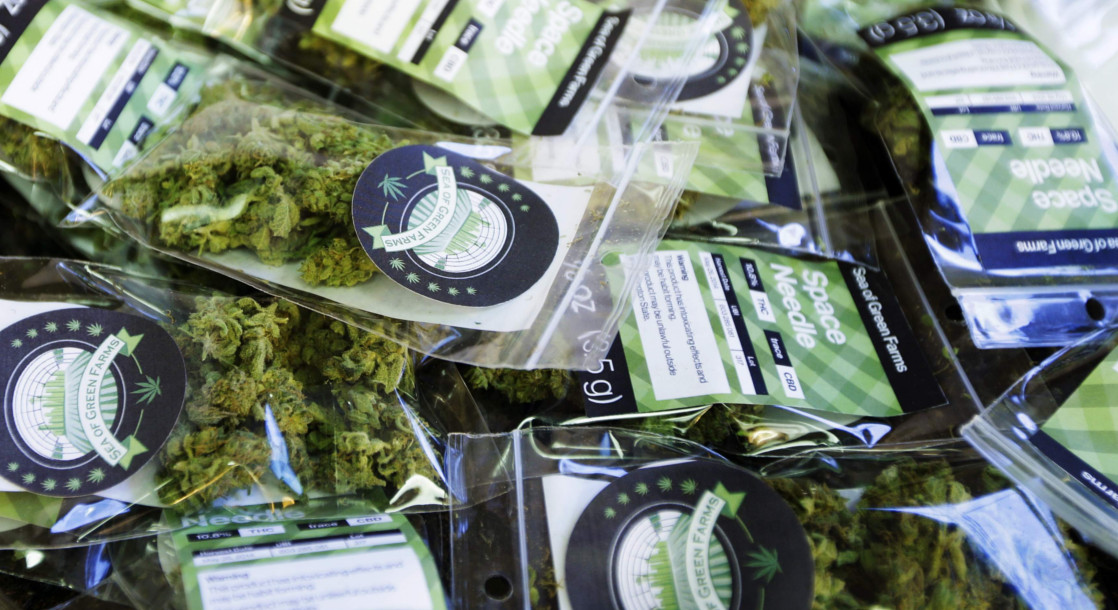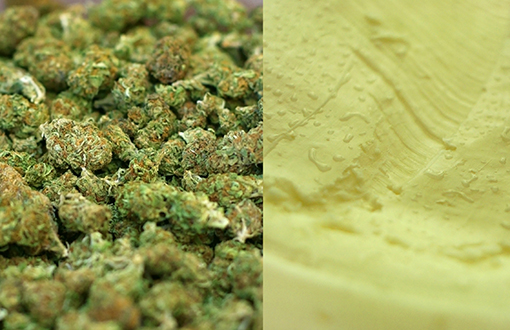Recently, a crypt was unearthed in Jerusalem’s Old City that is believed to be the tomb of the historical Jesus of Nazareth. The Church of the Holy Sepulchre is considered to be Christianity’s holiest site. The historicity of Jesus is a murky territory that has been explored to the point of exhaustion. Whether you regard Jesus a deity, the son of a deity, a prophet, or a man, he almost certainly used cannabis oil throughout his ministry.
Jesus’ lifespan falls neatly within the timeline of the ritualistic use of the Judaic anointing oil described as containing cannabis. Jesus was known by his disciples as Christ, the Greek translation of the Hebrew word Messiah, or “the anointed one.”
Cannabis historian Chris Bennett is an expert on the topic of the shamanic use of cannabis. “Well, nothing is certain without a time machine, but we do have archaeological evidence from the third century in Bet Shemesh showing the plant’s use for medical purposes both topical and burnt,” Bennett says. Bennett has written several books and blogs on the topic. His new book, Liber 420: Cannabis Arcanum, is slated for release in 2017. It chronicles the magical and ritualistic use of cannabis. “This material is a revelation,” Bennett says. “People do not understand the impact it will have one day.”
According to the Old Testament, the recipe for the holy anointing oil calls for nine pounds (!!!) of cannabis tops, along with cinnamon, myrrh, and other spices. The cannabis was called kaneh-bosm (fragrant cane) in Aramaic. The root of the word “kan” means reed or hemp. “Bosm” means aromatic. The word kaneh-bosm appears in the New Testament five times. The cannabis was extracted using about six and a half liters of olive oil. “You shall speak to the sons of Israel, saying, ‘This shall be a holy anointing oil to me throughout your generations.’ It shall not be poured on anyone’s body, nor shall you make any like it in the same proportions; it is holy, and it shall be holy to you.” Exodus 30:31 reads. The spice frankincense interestingly contains a chemical similar to THC. “Frankincense contains trahydrocannabinole, which is similar in molecular structure to tetrahydrocannabinol, the psychoactive component of cannabis,” wrote Professor Carl Ruck. “And it has been suggested that even in modern church rituals, the mild mood-elevating effects of this may help to create a religious state of mind in parishioners close enough to inhale its effects.”
The recipe for Judaic cannabis oil was widely used at the time of Moses until the time of the prophet Samuel. The oil was usually applied topically. Nine pounds of cannabis would be enough to constitute an effective topical preparation of cannabis oil. During the age of kings, the anointing oil was used by each presiding messiah-king for guidance. After the fall of the early kingdoms, the anointing oil was associated with paganism and banned.
According to Bennett, Jesus was called the Christ because he violated the Old Testament’s taboo on the Holy anointing oil. Jesus’ use of cannabis oil is briefly mentioned in the New Testament, but explained in rich detail in the Gnostic texts. “There is no reason to consider these ancient Gnostic documents as less accurate portrayals of the life and teachings of Jesus than the New Testament accounts,” wrote Bennett. “In a sense, the rediscovery of the Nag Hamadi Library marks the resurrection of a more historical Jesus, an ecstatic rebel sage who preached enlightenment through rituals involving magical plants, and who is more analogous to the Indian Shiva, or the Greek Dionysus, than the pious ascetic that has come down to us through the Bible’s New Testament.”
In the Gnostic book the Gospel of Phillip, we get a glimpse at the effects of the anointing oil used by Jesus. “The anointing with oil was the introduction of the candidate into unfading bliss, thus becoming a Christ,” it reads. Again, since Christ means an “anointed one,” becoming a Christ is their way of saying the initiate has reached a spiritual level. Early Christians could not get enough.
The cannabis theory becomes plausible when you consider that Jesus healed the sick such as lepers with incurable skin disorders, and “demonic possessions” that could be interpreted as epileptic seizures. Instead of leprosy, some scholars have suggested that the disease mentioned in Leviticus, tsara’ath, is actually a severe form of pruritis, a skin disorder that causes discomforting itchiness, and would have been treatable with cannabis oil. Jesus may have used cannabis oil to heal a woman with chronic menstruation.
The process was described in detail when Moses anointed Aaron and his sons. “He sprinkled some of it on the altar seven times and anointed the altar and all its utensils, and the basin and its stand, to consecrate them. Then he poured some of the anointing oil on Aaron’s head and anointed him, to consecrate him,” reads Leviticus 8:11.
Archaeological evidence to support smoked cannabis use close to the time of Jesus has been uncovered in Bet Shemesh near Jerusalem. Archaeologists found a 3rd or 4th century AD girl with 6.97 grams of cannabis in her stomach. “We assume that the ashes found in the tomb were cannabis. burned in a vessel and administered to the young girl as an inhalant to facilitate the birth process. In antiquity, this procedure would usually have been carried out by a midwife as physicians were by law prohibited from attending women in labour,” wrote archaeologists.
Anointing oil is still blessed and used medicinally—take, for example, the anointing oil used in the Mormon faith. The practice involves blessing the oil and administering it on the person’s head.
Jesus’ words and ministry have been twisted and contorted to support just about any argument. But, there is little doubt that if Jesus was truly called the anointed one, he did indeed use cannabis oil, which was standard at the time. Carl Ruck, professor of classical mythology at Boston University sums it up: “There can be little doubt about a role for cannabis in Judaic religion.”











